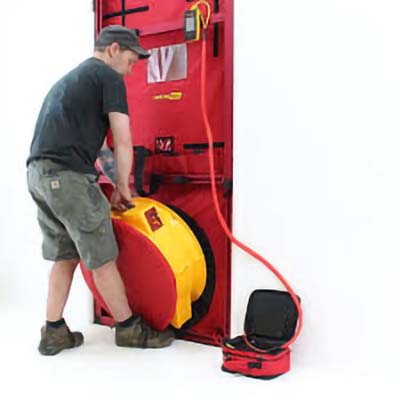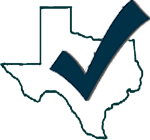Blower Door Test in Hubbard, TX | Certified Energy Testing
Constructing a new home or multi-family unit in Hubbard, TX, usually means you’ll need a blower door test to comply with the 2018 International Energy Conservation Code (IECC).
Our certified energy testers deliver precise and dependable blower door and duct leakage testing to ensure your project complies with all Texas energy code requirements. Our professionals are trained to identify air leakage concerns that compromise energy efficiency, indoor air quality, and climate control expenses. We deliver certified, cost-effective, and prompt blower door testing in Hubbard, TX, and nearby areas for builders, contractors, and homeowners.

What Is a Blower Door Test?
- Energy efficiency – A drafty home wastes energy and drives up heating and cooling expenses.
- Indoor air quality – Leaky buildings can let in unwanted allergens and harmful pollutants.
- HVAC performance – Air leakage forces HVAC systems to work harder.
- Comfort levels – Leaky homes suffer from drafts and unstable indoor temperatures.
How Does a Blower Door Test Work?
A blower door test utilizes a mounted fan on an exterior door to create a pressure variation between the inside and outside of a house. A pressure gauge detects how much air seeps in through unsealed gaps, cracks, and leaks. When a home has too many air leaks, improving insulation and sealing gaps may be essential.

Do You Need a Blower Door Test in Hubbard, TX?
In Hubbard, TX, the 2018 IECC requires a blower door test for all new residential buildings to confirm compliance with energy efficiency regulations.
You may also need a blower door test if:
✔ You’re in the process of building a home and must pass an energy compliance test.
✔ Your energy bills are high and you suspect excess air leakage.
✔ You experience drafts, uneven heating, or poor indoor air quality.
✔ You are applying for an energy efficiency rebate or certification.
For homes or projects needing a blower door test, we offer rapid scheduling, instant results, and certification for energy code compliance.

Texas Energy Code Requirements for Blower Door Testing
Per the 2018 IECC, homes constructed in Texas must meet the following air tightness specifications.
- 3-5 (Air Changes Per Hour at 50 Pascals) depending on location.
- Homes exceeding this air leakage limit may require additional air sealing measures.
When HVAC components, such as an air handler or ductwork, are placed beyond the conditioned space, a duct leakage test becomes necessary.
Our Blower Door Testing Process
In Hubbard, TX, scheduling a blower door test means our certified professionals will adhere to a structured process to ensure compliance:
Step 1: Preparation
- All windows and doors are securely closed.
- HVAC systems and exhaust fans are turned off.
- A blower door fan is installed in the main entryway.
Step 2: Conducting the Test
- To replicate real-world air leakage, the blower door fan creates a controlled depressurization of the home.
- Air infiltration is assessed through advanced gauges that pinpoint leakage locations.
Step 3: Test Report & Certification
- For energy code adherence, we supply a detailed blower door test report.
- Should air leakage be a problem, we offer expert guidance to help your home qualify.
Our goal is to provide a speedy, expert, and trouble-free process, keeping your project on time.

Why Choose Us for Blower Door Testing in Hubbard, TX
By selecting our professionals for blower door testing in Hubbard, TX, you enjoy:
✔ Certified Energy Experts – Fully licensed and trained professionals.
✔ Fast Scheduling – We work around your project timeline.
✔ Same-Day Results – Receive a certified test report immediately.
✔ Affordable Rates – Competitive pricing with no hidden fees.
✔ Duct Leakage Testing Available – One-stop compliance for all Texas energy codes.

Schedule Your Blower Door Test in Hubbard, TX Today!
Looking to schedule a blower door test in Hubbard, TX? We keep the process quick and stress-free. Contact us today o schedule your test and make sure your project meets Texas energy regulations.



